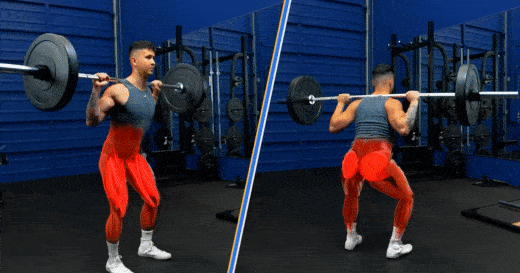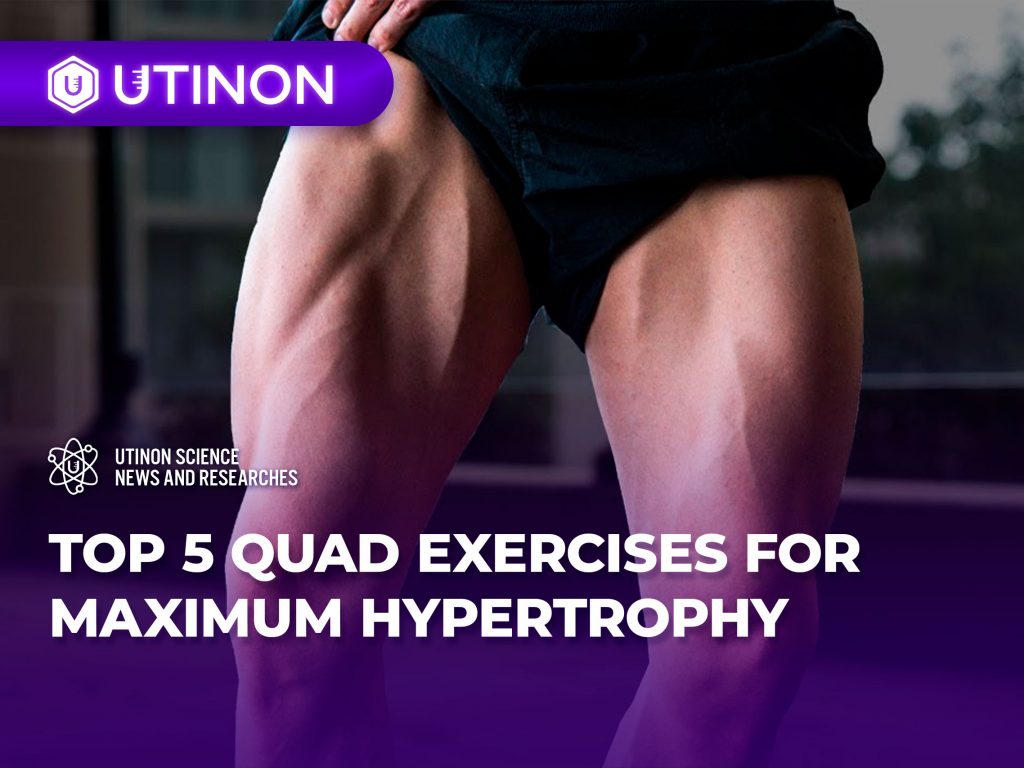Well-developed quadriceps are essential for balanced lower-body strength, athletic performance, and overall leg aesthetics. While many exercises target the legs, some movements stand out for their ability to deliver consistent growth and high-quality muscular development. Here are five top-tier quad exercises to help you maximize hypertrophy.
1. High-Bar Back Squat
The high-bar squat is a staple quad builder that emphasizes depth and upright posture. This variation, commonly used by Olympic weightlifters, places the bar high on the traps, close to the neck. The lifter maintains a vertical torso, allowing the knees to travel forward and outward during the descent.

Key technique points:
- Feet should be placed roughly shoulder-width apart and turned out around 45 degrees.
- The squat should be performed as deep as possible, without compromising spinal alignment or heel contact.
- Deeper squats under high tension create more stretch, which contributes to hypertrophy.
- This movement also improves mobility and reduces the risk of injury in other athletic or daily activities.
2. Sissy Squat
The sissy squat isolates the quadriceps through deep knee flexion and an upright torso. Using a sissy squat machine provides added stability and depth, but the movement can also be done on the floor with support from a rack or stable object.
Execution tips:
- Keep the torso completely upright with the chest pointing upward.
- Descend slowly, driving the knees forward while maintaining tension.
- Pause at the bottom for 1–2 seconds before rising.
- Avoid locking out completely at the top to maintain constant tension.
- Progress by adding weight via a dip belt once the bodyweight variation becomes manageable.
3. Hack Squat
The hack squat machine provides a guided path for targeting the quads with heavy load and minimal balance requirements. It’s especially useful for high-repetition sets.
Technique focus:
- Position your feet low on the platform to increase knee flexion while keeping heels on the surface.
- Descend until the heels are close to lifting, then reverse the movement under control.
- A pause at the bottom increases muscle activation and time under tension.
- Use a weightlifting belt and squat shoes to improve bracing and stability.
This movement allows for significant loading, but most advanced lifters will prioritize range of motion and technique over excessive weight.

4. Leg Press
The leg press is a versatile machine-based exercise that can be adapted for maximum quad stimulation. Proper foot placement and setup are key.
Tips for optimal performance:
- Position your feet low on the platform while ensuring heel contact throughout the movement.
- Consider using weightlifting shoes to improve ankle mobility and depth.
- Placing a mat or pad under your lower back can allow deeper range of motion and protect the lumbar spine.
- Narrow, medium, or wide stances can all be effective, depending on quad or adductor emphasis.
For those with greater mobility, aiming to bring the knees outside the torso and deep toward the chest allows an even deeper stretch and enhanced activation.
5. Belt Squat
The belt squat is a highly effective, spine-friendly alternative to traditional squatting. It allows high training volume with reduced axial loading.
Execution tips:
- Adjust foot platform height (if possible) to increase resistance at the bottom of the movement.
- Descend with control and rise only about two-thirds of the way up to maintain constant muscle tension.
- Because the load is on the hips, this movement produces less systemic fatigue, making it ideal for higher training frequencies.
Advanced technique – Myo-Reps:
- Perform an initial set of 15–20 reps to near failure.
- Rest 5–10 seconds, then continue doing small sets (2–5 reps) until total rep count matches or exceeds the first set.
- This method creates high metabolic stress and significant muscular fatigue in a short time.
Conclusion
Whether you’re training in a fully equipped gym or working with minimal equipment, these five quad exercises offer a range of options to build size and strength. Focus on form, range of motion, and proper progression over time. Consistency and effort in these movements will translate into powerful, well-developed quads.
